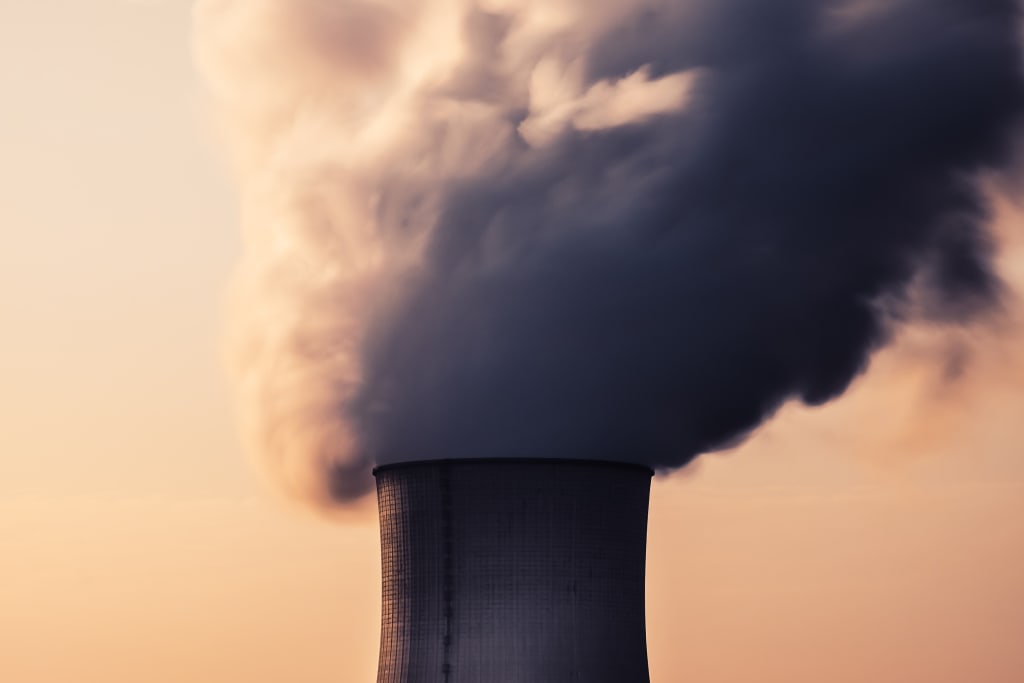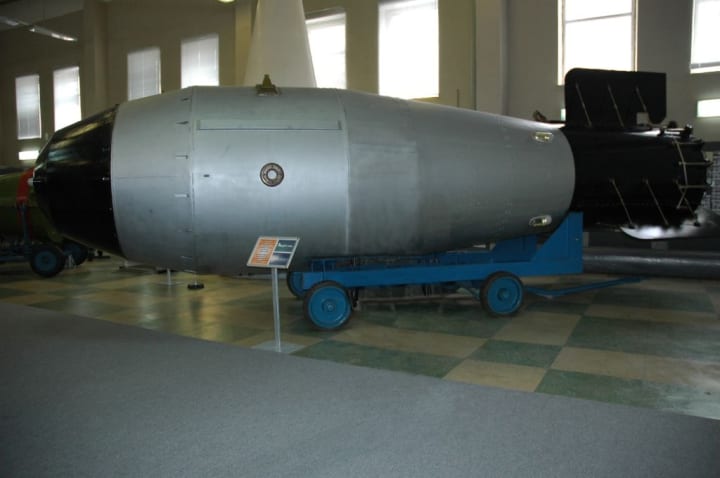Facts About Nuclear War Worth Knowing
It's not pleasant to think about nuclear destruction, but some facts about nuclear war are worth knowing.

Many people from across the world have varying opinions about nuclear power and nuclear weapons. No matter if you think they are a necessary evil, an unforgivable crime against humanity, or that nuclear disarmament is not just for hippies anymore, pretty much everyone can agree that global nuclear war would be devastating for the world's population. Nuclear war has been a threat to society ever since governments began testing this powerful technology in the middle of the 20th century. Here are some facts about nuclear war from its beginnings to the current state of the world.
Stanislov Petrov single-handedly prevented nuclear war.

Photo by The Official CTBTO Photostream on Wikimedia.org
While you almost surely have never heard of Stanislav Petrov, he is single-handedly to thank for preventing a possible outbreak of full-on nuclear war in 1983. The Cold War was in full swing and tensions were particularly high after the Soviet military shot down Korean Air Lines flight 007, an act which was condemned as a "massacre" by the United States government. Three weeks after the incident, on September 26, 1983, the Soviet Union's nuclear early-warning defense system detected six projectiles launched from the United States. Petrov was the duty officer monitoring the system when the attack happened. Judging the alert to be a false alarm, he disobeyed orders to notify his superiors. If he had followed these orders, the Soviet Union would almost certainly have retaliated with nuclear force.
Entire populations were effected from testing alone.

Photo Courtesy of the United States Department of Energy
It sounds a little obvious to say simply that nuclear bombs underwent significant testing, but the details behind many of the tests comprise some of the most disturbing facts about nuclear war and nuclear weapons. One of the most famous nuclear test sites was Bikini Atoll, a small group of islands in the Pacific Ocean. The United States set off 23 different nuclear warheads on the island between 1946 and 1958. The small indigenous population was forced to abandon their home and relocate to a nearby island. What's worse, some of the nuclear explosions on the island were larger than anticipated, forcing the native islanders to relocate again to another island even farther away. The largest of these tests even caused radioactive contamination to reach several continents, including Australia, Asia, and even parts of Europe.
The Tsar Bomba remains the most powerful nuclear weapon ever.

Photo by Croquant on Wikimedia.org
The Cold War was basically a race between the United States and the Soviet Union over who could build the biggest and baddest atomic bombs. While the United States is generally considered to have a greater quantity of bombs, the "award" for largest nuclear weapon ever made goes to the Soviet Union, who built and tested the Tsar Bomba (aka "King of Bombs") in 1961. The Tsar Bomba's blast yield was the equivalent of more than 50 megatons of TNT. In other words, it was about three thousand times more powerful than the bombs dropped on Hiroshima and Nagasaki. The shockwave created by the blast was still registering on seismic sensors after its third trip around the world.
Project A119 almost blew up the moon.

Photo by Mike Petrucci on Unsplash
Okay, that title may sound a little sensationalist, but there was a time when American scientists were seriously considering dropping a nuclear warhead on the moon. Such a test would have caused a flash of light visible to the naked eye on Earth, and would have provided unique data for astronomers and astrogeologists. The classified project began in 1958 with a team that included a young Carl Sagan, but was ultimately tabled in fear of what the public's reaction might have been.
North Korea's nuclear capability is 50 years in the making.

Photo by Uwe Brodrecht on Wikimedia.org
North Korea has made several headlines over the past couple of years thanks to its testing of nuclear weapons and ballistic missiles. As of this writing, the most recent test is believed to be the cause of a magnitude 6.3 earthquake that occurred near North Korea's nuclear testing facility on September 3, 2017. The nation's government later claimed that the test was a hydrogen bomb capable of being mounted on an intercontinental ballistic missile (ICBM). While the country has only recently launched successful nuclear tests, North Korea's nuclear capability has been in the works since 1956, when the Soviet Union began training North Korean scientists to build their own nuclear program.
We've accidentally dropped, and even lost, some nukes.

Photo by Airman 1st Class Victor J. Caputo on Wikimedia.org
Another one of the more disturbing facts about nuclear war is the fact that there are documented instances of the United States accidentally dropping some bombs, and even losing some of our nuclear weapons. Two nuclear bombs were accidentally dropped by a plane traveling over North Carolina in 1961. Luckily the bombs didn't set off and did not release any radiation into the environment. In 1968, a B-52 bomber carrying four nuclear weapons crashed on the coast of Greenland. While the US government claimed to have secured the crashed plane and its undetonated weapons, recent reports have brought that claim into question.
Nuclear tests hide in plain sight.

Photo by U.S. Army Photographic Signal Corps on Wikimedia.org
One of the trickier aspects of nuclear testing is that countries try to keep their full nuclear capability secret from each other. This was especially true during the Cold War, when the United States and the Soviet Union were preparing for the potentiality of nuclear war. The trick, however, is that nuclear bombs create huge explosions! Even when tests are held underground, such as during the September 2017 nuclear test in North Korea, the resulting shockwave creates an unmistakeable seismic signature. Nowadays, if any country were to perform a nuclear test, everyone knows about it in short order. One disconcerting exception was the 1979 Vela Incident, during which a nuclear explosion was detected in the Indian Ocean. The world is pretty sure it was a nuclear weapons test, but nobody knows for sure who launched that test, and no country has taken credit.
Nuclear war isn't the only threat.

Photo by Carl Montgomery on Wikimedia.org
Nuclear war is considered by pretty much everyone to be a terrible thing. One of the most chilling facts about nuclear war is that if it were to actually break out, civilization would be forever changed by the death and destruction caused by that many nuclear blasts and the resulting radiation. What's more controversial is the non-weaponized nuclear technology in the world. Many countries have embraced nuclear power as a means of providing cheap energy to the masses. Notably, nearly half of France's domestic energy production comes from nuclear power plants. When properly executed, nuclear energy is also surprisingly clean, as its carbon dioxide emissions are quite low. There is no shortage of nuclear power plants going terribly wrong, however. The 1986 incident in Chernobyl, Ukraine is perhaps the most infamous, but both the United States and Japan have experienced numerous devastating accidents, often the result of earthquakes or other natural disasters.
Nuclear launch decisions may be made in minutes.

Photo by Srikanta H. U on Unsplash
For ordinary citizens like myself, the best we can do to prevent global nuclear war is often merely hoping for the best. These decisions largely happen at the highest levels of leadership in countries all over the world. What is most disconcerting is when you realize how quickly the world can change. For example, if the US missile defense systems detect a possible nuclear attack, the president has only a few minutes to decide to retaliate with ICBMs. From the moment he or she gets word that another nation has committed to nuclear propulsion toward the US, the president has anywhere from four to twelve minutes to decide whether or not to counterattack with the nation's own nuclear weapons. This snap decision would have a potentially devastating effect on the Earth's population.
Nuclear programs haven't ceased.

Public Domain Photos
With a stockpile of approximately five thousand functional nuclear warheads, you would think the United States could cool it on the nuclear weapons program. After all, the Cold War has been over for nearly three decades now. Unfortunately, this couldn't be further from the truth, as the US Department of Defense and Department of Energy have long-term plans for expanding the nation's nuclear capability. Simply maintaining our current nuclear capabilities costs upwards of $35 billion every year. The proposed budget for an expansion and extension plan, which would develop new delivery systems for nuclear warheads, is $1 trillion.
About the Creator
Joseph D. N. Kendrick
Writer of words. Haver of cats. joeykendrick.com






Comments
There are no comments for this story
Be the first to respond and start the conversation.